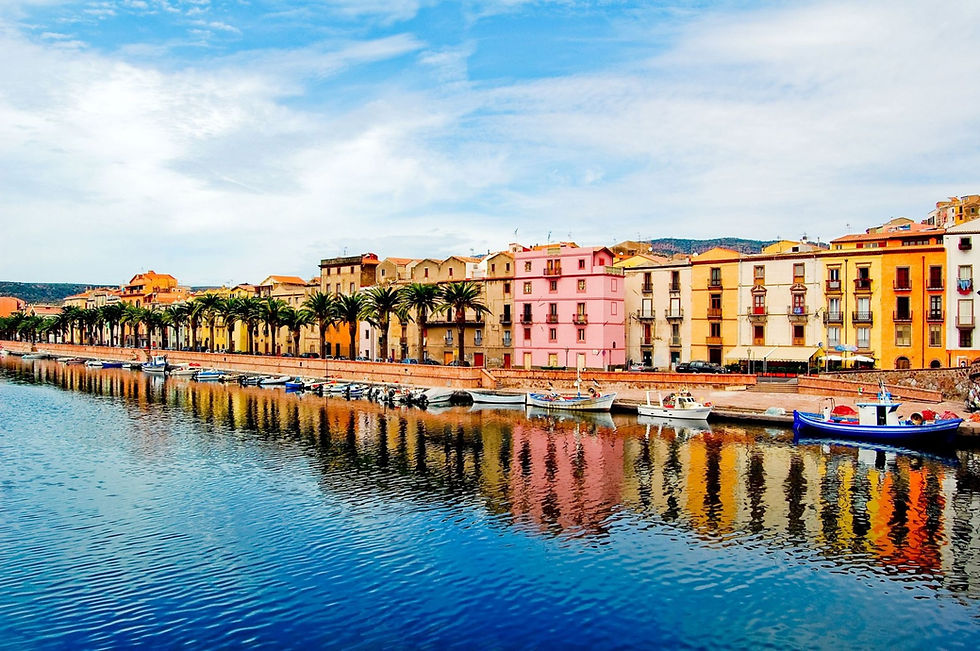Sheep Herding in Italy: The Tradition of Transumanza
- Bruce White
- Oct 8
- 3 min read
An Exploration of Italy’s Age-Old Pastoral Practice
Sheep herding has long been an integral part of rural life in Italy, where it is steeped in history, culture, and environmental stewardship. Locally referred to as Transumanza, this practice involves the seasonal migration of livestock—primarily sheep—between lowland winter pastures and highland summer grazing grounds. Transumanza is more than a simple agricultural technique; it is a tradition that shapes communities, landscapes, and local economies across the Italian peninsula.

The Origins and Meaning of Transumanza
The term Transumanza comes from the Latin "trans" (across) and "humus" (ground), literally meaning “across the land”. This practice dates back thousands of years, originating from the need to optimise grazing resources and ensure the health and productivity of flocks throughout the year. In Italy, transumanza routes have been established over centuries, some even recognised as UNESCO Intangible Cultural Heritage for their cultural significance.

The Migration: Routes and Rituals
Each year, typically in spring and autumn, shepherds lead their flocks along ancient trails—known as tratturi—that crisscross regions such as Abruzzo, Molise, Tuscany, and Sardinia. The journey can span hundreds of kilometres and last several days or even weeks, depending on the route. These migrations are often accompanied by local festivals, music, and communal gatherings, highlighting the strong social and cultural ties associated with transumanza.

Case Study: Farmers of Orgosolo, Sardinia
In the heart of Sardinia, the town of Orgosolo stands as a vivid example of how transumanza still thrives today. Here, local shepherds maintain age-old traditions, guiding their sheep between the green valleys and rugged mountains that define the island’s landscape. The people of Orgosolo are renowned for their deep respect for the land and their commitment to communal herding practices, often working together as extended families and neighbours. Their annual migrations are marked by colourful celebrations and the sharing of local delicacies such as pecorino cheese. The murals that adorn Orgosolo’s buildings tell the story of the shepherds, depicting scenes of daily pastoral life and the enduring bond between community and nature. The experience of the Orgosolo farmers showcases the resilience of transumanza on the island, where tradition is both safeguarded and celebrated.

Economic and Environmental Impact
Transumanza plays a pivotal role in supporting rural economies. Shepherds and their families rely on sheep for wool, milk, cheese (such as the famed Pecorino), and meat. The movement of flocks also benefits the land, as grazing helps manage vegetation, reduces wildfire risk, and promotes biodiversity. This sustainable approach to animal husbandry is increasingly recognised as valuable in contemporary efforts to preserve traditional farming while combating climate change.

Modern Challenges and Revitalisation
Despite its enduring importance, transumanza faces modern challenges. Urbanisation, changing agricultural policies, and the decline of rural populations have threatened the continuation of this custom. However, recent years have seen a revival, driven by increased interest in sustainable agriculture, agritourism, and heritage preservation. Initiatives to protect ancient routes and promote transumanza as a tourist experience are helping to ensure its survival for future generations.
Cultural Significance
Transumanza is not just an agricultural activity; it is a rich cultural tradition. Folklore, music, and cuisine associated with sheep herding are woven into the fabric of local life. Stories of shepherds and their journeys have inspired Italian literature and art, while festivals celebrating transumanza draw visitors from across the world, offering a glimpse into Italy’s pastoral heart. In places like Orgosolo, these celebrations are especially vibrant, reflecting the community’s unique spirit and devotion to their land and way of life.
Conclusion
Transumanza stands as a testament to the enduring relationship between people, animals, and the land in Italy. As both an economic necessity and a cultural treasure, sheep herding continues to shape the country’s rural identity. Whether witnessed in the rolling hills of Tuscany, the rugged mountains of Abruzzo, or the storied valleys of Orgosolo in Sardinia, the annual migration of flocks remains a vital and beautiful part of Italy’s living heritage.

Case Study: Farmers of Orgosolo, Sardinia
Right in the middle of Sardinia, the town of Orgosolo is a great example of how transumanza is still alive and kicking. The local shepherds stick to their old ways, moving their sheep between the lush valleys and tough mountains that make up the island. Folks in Orgosolo are well-known for respecting the land and working together—family and neighbours pitch in as a team. Every year, their big migrations turn into lively gatherings, with plenty of tasty treats like pecorino cheese to share around. The town’s murals paint the story of the shepherds, showing off scenes from everyday life and the strong connection between the community and the land. Orgosolo’s farmers show how tough and proud transumanza is in Sardinia, keeping tradition alive and making sure everyone gets to join in the fun.



Comments